An early start was called for again. We had a long drive ahead of us but were determined to look round the “old” village of Oradour-sur-Glane. I say the “old” village, because we had spent the night in the “new” village which was built after the second world war. The old village remains in a state of suspended animation, just as it was left on 10thJune 1944, when the Nazis razed the village to the ground.
In June 1944 an SS Division was moving north to be deployed against the D-Day invasion in Normandy, when one of its officers was apparently captured and held hostage by a number of villagers in Oradour-sur-Glane. A company of the Waffen SS retaliated in an horrific manner. They rounded up all the inhabitants (some has wisely fled when they heard the SS were coming), and separated the men from the women and children. The men were held in barns and the women and children in the church. The SS then proceeded to machine gun the men and set the barns alight, following which the massacred the women and children in the church. 190 men, 247 women and 208 children were killed. One woman escaped and six men, to tell the tale. Before leaving the village the SS attempted to raze the village to the ground.
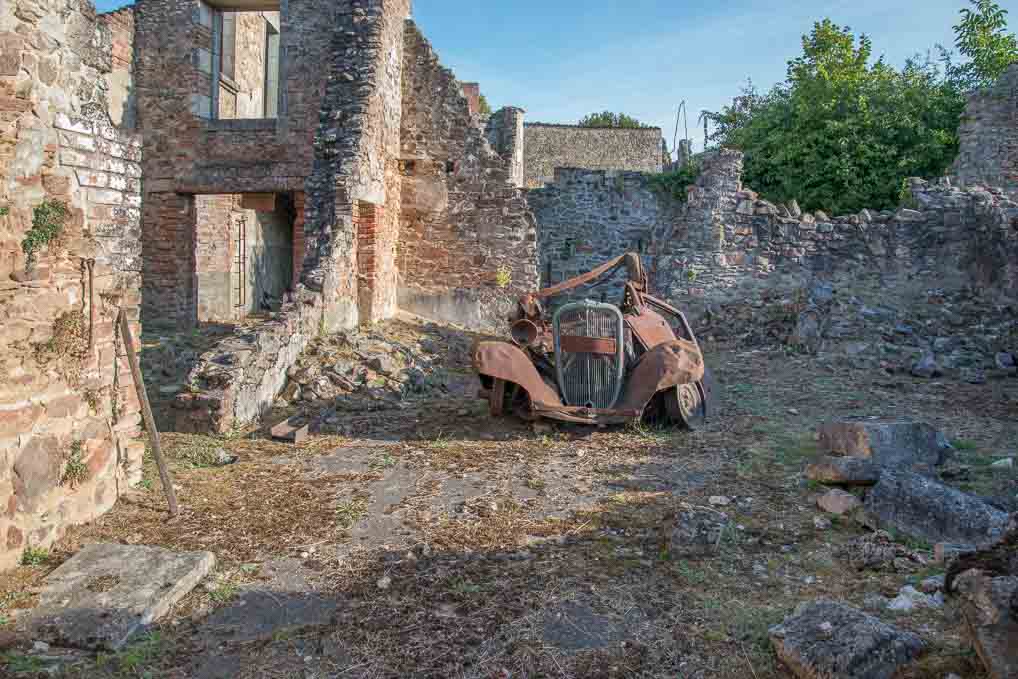
After the war there were a few prosecutions of the SS soldiers involved, but most of the responsible company were killed in the fighting during the remainder of the war. General de Gaulle insisted the village be left as a memorial to those killed and a new one built.
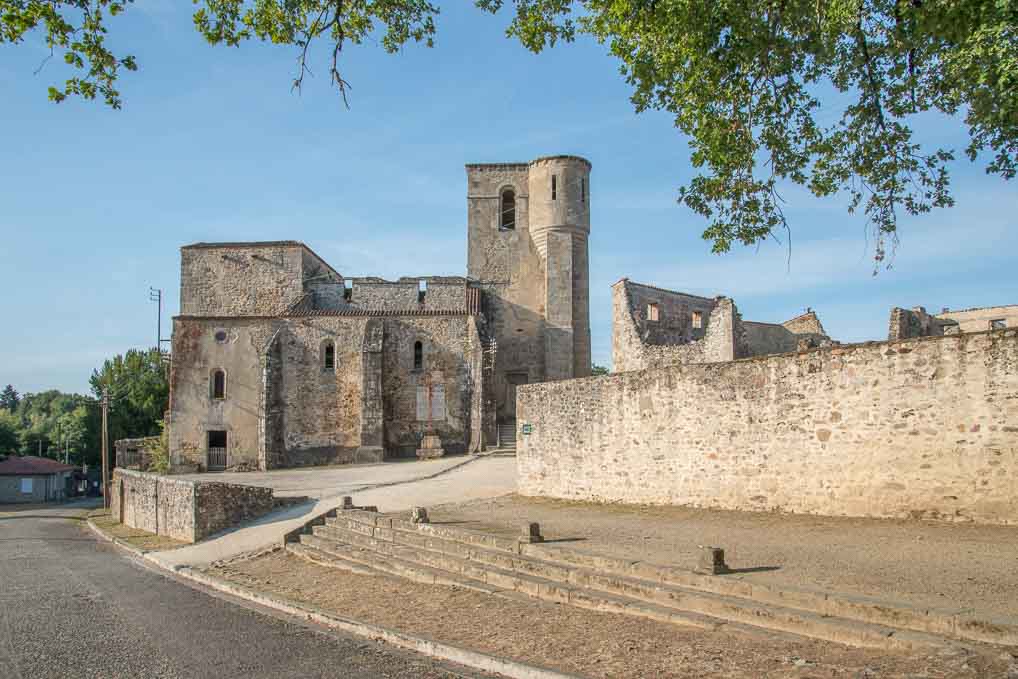
Sarah and I toured the site separately because, much to our surprise, dogs were not allowed in. I went in as the monument opened and so initially had the whole village to myself. It is an eerie place. Tumbled down buildings line each of the streets and rusted 1940s cars remain in crumpled heaps where they were originally destroyed. The church is a particularly moving place, with bullet holes still clearly visible as evidence of the atrocity.
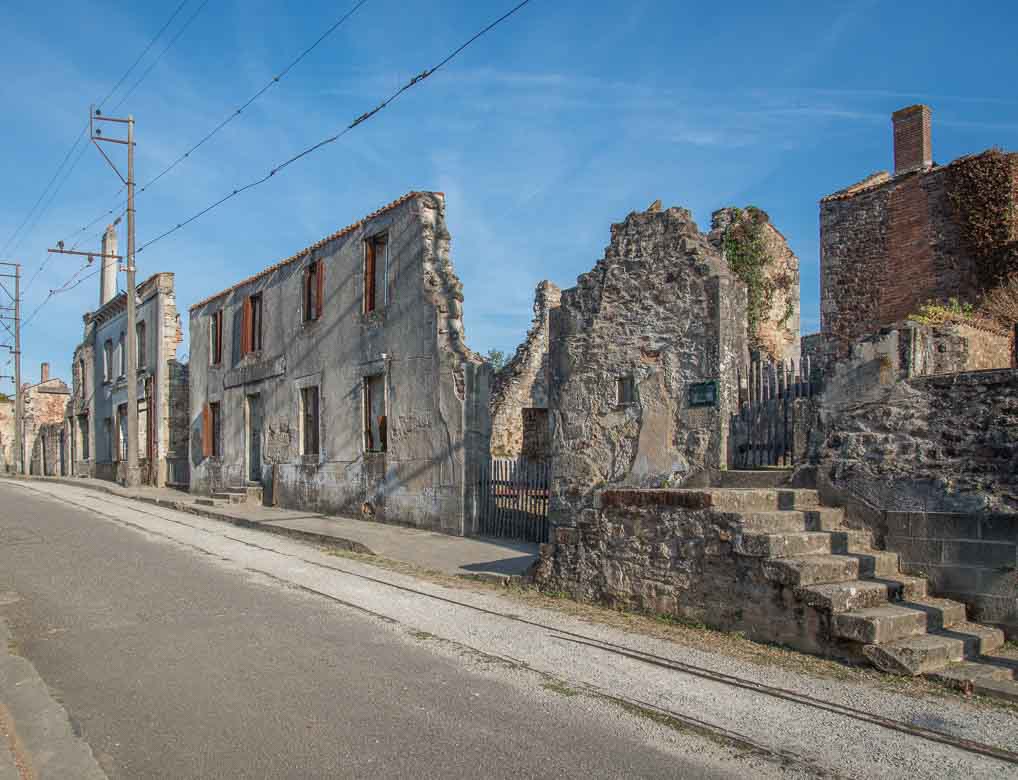
In the new visitor centre there is a small museum, which we did not visit, but in the public areas there are hundreds of black and photos of the men, women and children massacred, a haunting reminder of the human face of this war crime.
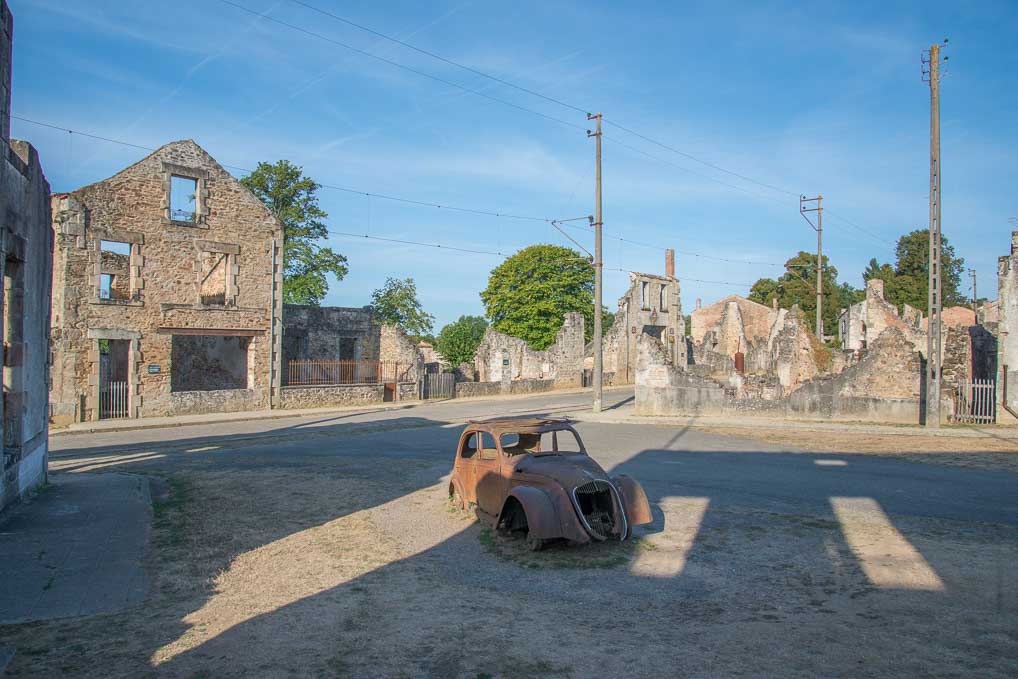
Similar atrocities were being carried out all over Europe during this period, particularly on the Eastern front by both the Germans and Russians, but I am not aware of anywhere else where the evidence has so movingly been preserved.

Basil was on the road once more by 10.30 for our relentless journey south. We really entered the south of France today and the temperature reflected this, reaching 29 degrees as we circumnavigated Bordeaux.
As we approached the Atlantic coast it was clear we were in holiday territory, with numerous campsites, apartments and hotels. But the season has already ended. The roads were relatively quiet, some campsites were already closed and the enormous car parks in our final destination, Mimizan Plage, were empty.
Our campsite, Club Marina-Landes (44.204253, -1.289296 €17 with the ACSI card) is still relatively full, but closes in 13 days. It is a full service site with swimming pools, crazy golf, restaurant and all the bells and whistles. We found a nice quiet pitch and after settling in went for a walk to the beach, which stretches as far as the eye can see in both directions.
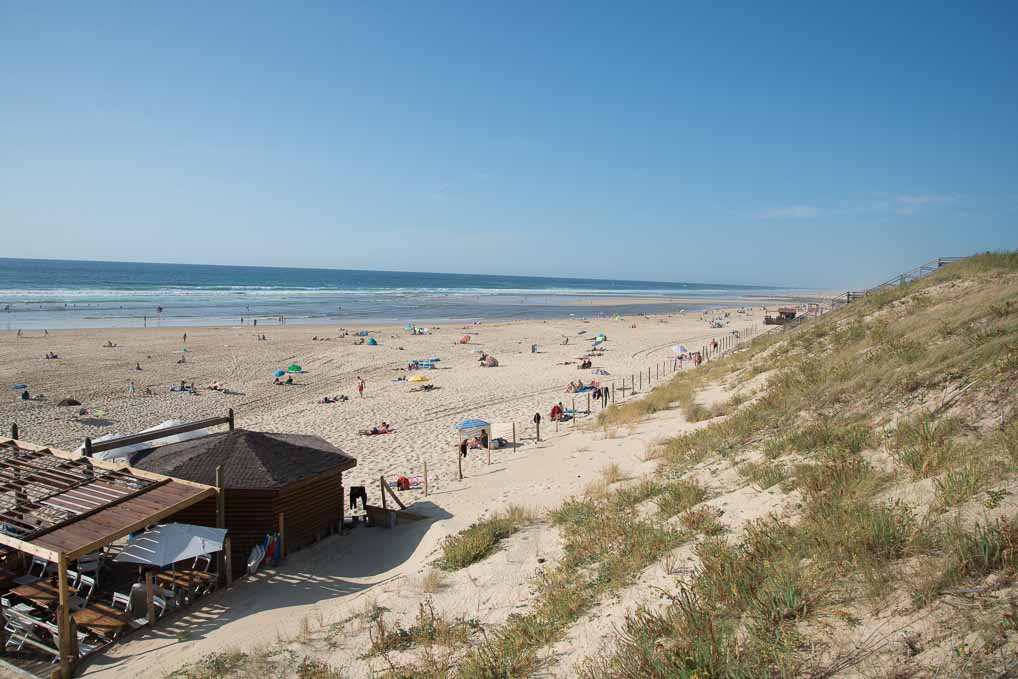
Mimizan Plage
The plan is to stay here for 2 or 3 nights to recharge our batteries before starting our exploration of Spain, which is only another 90 miles further south.
